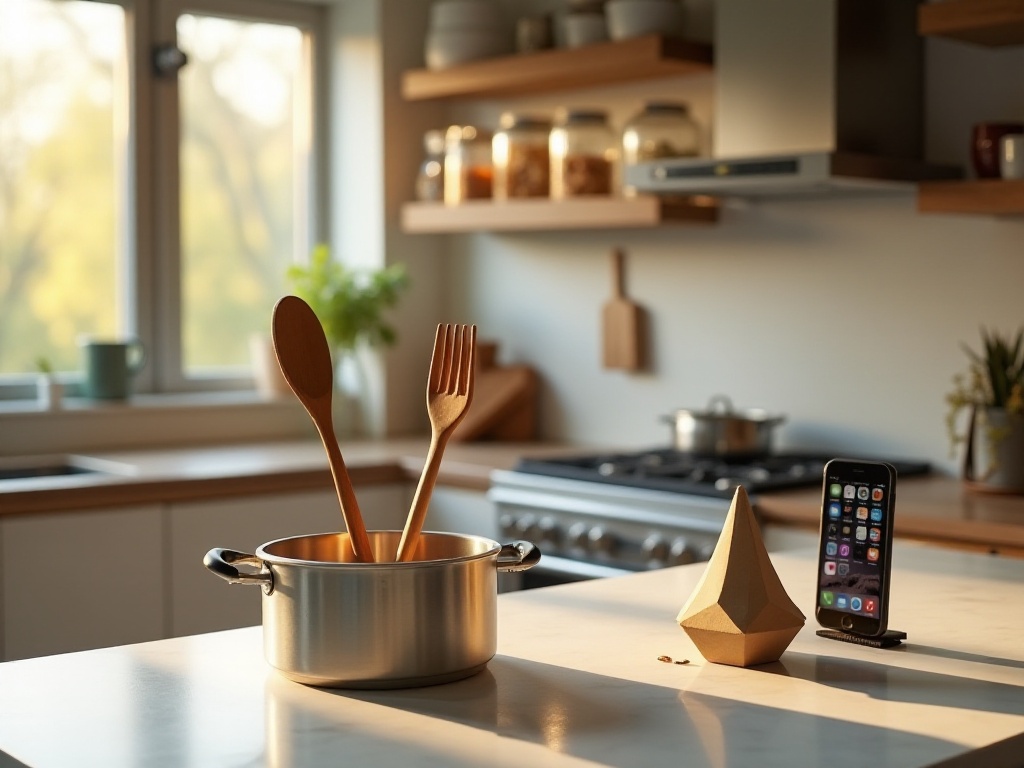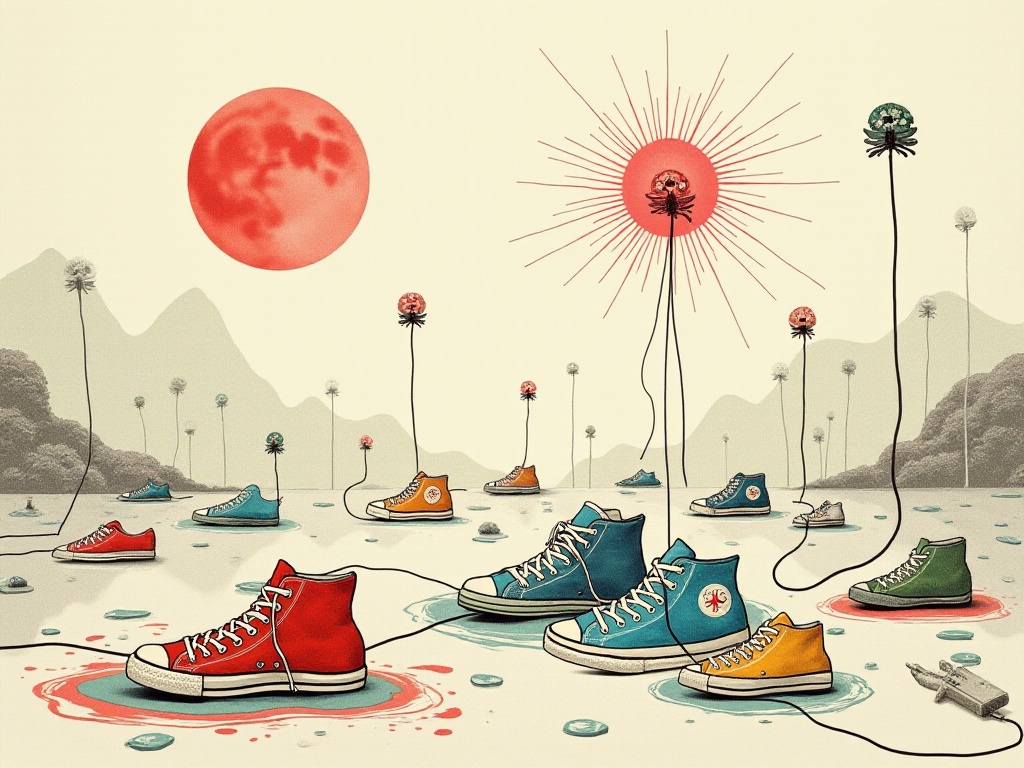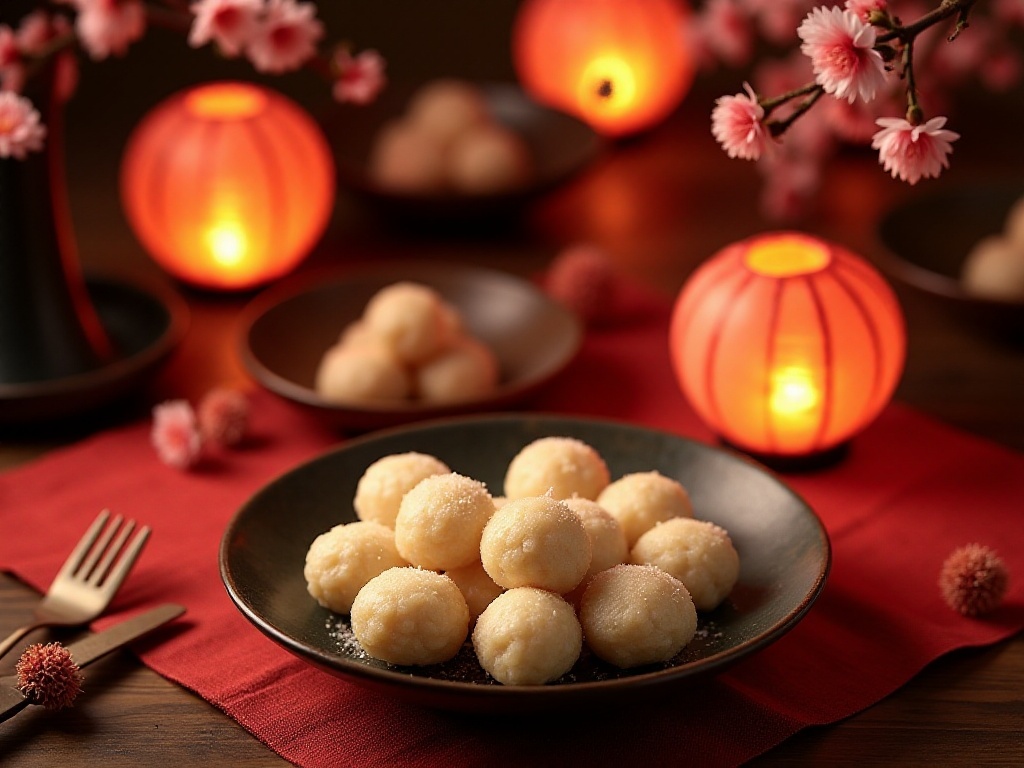
Opening Chat
Recently, I've really been getting into the New Year spirit! You can feel it in the air while walking around. The New Year goods sections in supermarkets are incredibly lively, with dazzling arrays of products everywhere you look. The shopping malls are starting to put up red lanterns, Chinese knots, and "Fu" character decorations, filling the entire city with a festive atmosphere.
Have you started preparing for the New Year at your home? Well, my mom has already got everything planned out for me - she just dragged me off to buy various cleaning tools as soon as I got paid. To be honest, I always struggle with this time of year: with such a big house, where should I even start cleaning? After years of practice and learning from mistakes, I've finally developed a reliable Spring Festival cleaning strategy that I'd like to share with everyone today.
Historical Origins
The tradition of Spring Festival cleaning actually has quite a history - after researching many historical materials, I discovered this custom can be traced back to the Shang and Zhou dynasties, over three thousand years ago! In ancient times, there was an important end-of-year ceremony called "La Ji" (腊祭) for worshiping deities and ancestors.
People took this ceremony very seriously. Before the worship, the whole family would mobilize to clean their houses and courtyards spotlessly. They believed that only a clean and tidy home could show proper respect to the deities and ancestors. This tradition has continued to the present day, though its form and content are now more closely integrated with modern life.
Think about it - our ancestors began valuing environmental hygiene thousands of years ago, which truly represents inherited wisdom. Although we may not care as much about the worship aspect nowadays, the core concept of maintaining a clean living environment has remained unchanged.

Scientific Significance
At this point, some might ask: Don't we clean weekly now? Why do we need a big cleanup before the New Year?
That's a great question! In fact, there are profound scientific reasons behind this traditional custom. After reviewing numerous medical documents and environmental health research reports, I found that winter is indeed a peak season for respiratory diseases. According to authoritative data, the incidence of respiratory infections during December to February is 30% higher than usual.
Why is this? Mainly because in winter, when temperatures are low, people tend to keep windows and doors tightly closed, leading to poor indoor air circulation. Combined with heating, indoor environments often become dry, creating favorable conditions for viruses and bacteria to survive.
Moreover, our regular cleaning is often superficial, missing many corners and hidden spots. Research shows that routine cleaning in average households only covers about 60% of areas, allowing dirt and bacteria to quietly "settle down" in corners.
This is when a thorough cleanup becomes particularly important. Through systematic cleaning, we can: 1. Thoroughly remove accumulated dirt and bacteria 2. Improve indoor air quality 3. Reduce allergens 4. Prevent various diseases
Specific Steps
So, how should we clean? I recommend following the basic principle of "top to bottom, inside to out." This isn't just random advice - it's a scientifically proven method through practice.
Ceiling Operation
First, we need to look up and start with the often-overlooked ceiling. Honestly, I never paid attention to the ceiling until one time when I was lying on the couch browsing my phone and discovered several cobwebs in the corners! It was terrifying!
According to indoor environmental monitoring data, dust accumulates on ceilings much faster than people imagine. This is especially true in homes with central air conditioning, where AC operation accelerates dust settlement on the ceiling. Last time I cleaned my chandelier, the dust on the cloth was thick enough to make a blanket!
I have several practical suggestions for cleaning ceilings:
First, you must prepare a dust removal tool with an extendable pole. I used to be too frugal to buy one and had to stand on chairs to clean, which was not only exhausting but also dangerous. After I finally bought an extendable duster online, ceiling cleaning became much easier.
Second, if you have chandeliers, remember to turn off the power first. I have a friend who got a nasty shock because they carelessly used a wet cloth to clean a powered chandelier. Safety first - you can't be careless with these things.
Lastly, I recommend cleaning ceilings on cloudy days or when the sun isn't too strong. Strong sunlight makes dust more visible in the air, which might affect our judgment. Plus, cleaning under strong light can strain your eyes.

Wall Cleaning
After the ceiling, it's time for the walls. To be honest, I used to think walls wouldn't get too dirty, maybe just a bit dusty. Until one time, I wiped the living room wall with a wet cloth, and the color of that cloth absolutely shocked me!
According to professional indoor air quality testing data, the walls in an average home can accumulate 5-10 grams of dust per square meter. This invisible dirt not only affects indoor air quality but also causes walls to yellow and blacken.
The kitchen walls are particularly problematic! No matter how effective your range hood is, some cooking fumes will escape and gradually form a layer of grease on the walls. This grease not only looks ugly but also easily attracts dust, becoming thicker over time.
I've summarized several useful methods for cleaning walls:
For regular walls, use professional wall cleaners. But note that different wall materials require different cleaners. For example, latex paint walls and wallpaper require completely different cleaning methods. I once used the wrong cleaner and peeled off a corner of wallpaper, which was very troublesome to repair.
For kitchen walls, use degreasing cleaners. You can spray a layer of cleaner, wait a few minutes for it to penetrate, then wipe with a cloth. This greatly improves cleaning efficiency.
If you find stubborn stains, don't scrub too hard as you might damage the wall. Instead, apply cleaner multiple times and let it do the work. For stains that won't come off, consider getting professional help.

Furniture Organization
Next comes the most time-consuming part: furniture cleaning. Honestly, this step is the easiest to overlook because furniture comes in various shapes, and many areas are hard to reach.
According to a household cleaning survey, 83% of families don't move large furniture during routine cleaning. This makes the areas behind and under furniture a "paradise" for bacteria. Research shows that dust accumulation behind furniture is often 3-5 times greater than on the surface!
Here's my furniture cleaning strategy:
First, sofas. For fabric sofas, start by vacuuming surface dust, then use professional fabric cleaner for deep cleaning. For leather sofas, use leather-specific cleaners. Remember to remove all cushions for cleaning - food crumbs and dust in sofa crevices are easily overlooked.
Wardrobes are a big project. Take this opportunity to organize clothes, storing or donating items you rarely wear. Carefully wipe wardrobe corners and drawers, as these areas easily collect dust.
For dining tables and coffee tables, clean not just the surface but also the bottom and legs. The area under dining tables often has fallen food debris.
Bookshelves are the most troublesome because all books need to be removed and wiped. Don't be lazy - accumulated dust on books can lead to mold if not cleaned timely.
Floor Cleaning
Finally, we come to floor cleaning. Though it's the last step, we can't be careless. All the dust from previous cleaning is now on the floor!
Here's my floor cleaning process:
First step, use a vacuum cleaner to remove dust, hair, and debris. Today's vacuum cleaners are very powerful - I recommend getting one with strong suction for better cleaning efficiency.
Second step, wet mop. Here's a tip: add some white vinegar to the cleaning solution. Vinegar not only has good antibacterial effects but also removes stubborn stains. Research shows this method can eliminate over 95% of floor bacteria.
Third step, after the floor is almost dry, go over it again with a clean mop. This removes any remaining water marks and prevents streaks.
Remember to consider different floor materials. Wooden floors shouldn't get too wet, while tile floors can be mopped with warm water for better cleaning results.

Storage and Organization
After cleaning, storage and organization are also important steps. I've noticed many homes look messy even though they're clean, mainly because of poor organization.
Survey data shows that about 30% of items in average households are unused. These items not only take up space but also affect overall appearance. That's why I highly recommend using the "cut-discard-leave" method when cleaning.
Specifically:
Cut: Stop buying unnecessary items. Before buying anything, ask yourself if you really need it.
Discard: Clear out items you haven't used in a year. You can sell, give away, or donate them to let these items serve their purpose.
Leave: Say goodbye to unnecessary items. Like expired cosmetics, ill-fitting clothes, broken appliances, etc.
When organizing, I suggest arranging storage locations based on frequency of use:
Frequently used items should be within easy reach.
Occasionally used items can be placed slightly higher or farther away.
Rarely used items can be stored in storage rooms or basements.
Precautions
Finally, I want to remind everyone of several important points:
First, cleaners must be used according to type. Different surfaces need different cleaners - you can't use one cleaner for everything. I once damaged the surface of solid wood furniture by using the wrong cleaner, which was heartbreaking.
Second, always ventilate while cleaning. But be mindful of indoor temperature, especially in winter - don't keep windows open too long to avoid getting cold. I suggest cleaning by zones and opening windows only in the area you're currently cleaning.
Third, if you have elderly people or children at home, try to clean when they're not around. Cleaning product fumes can irritate the respiratory system, and dusty environments aren't good for them. Clean while they're out or napping.
Most importantly, pay attention to safety. Always unplug electrical appliances before cleaning, ensure ladders are stable, wear gloves when using cleaners - these safety measures are essential.
Summary and Outlook
Through this systematic deep cleaning, we not only refresh our homes to welcome the New Year but also take the opportunity to organize our living spaces. A clean and tidy home not only feels comfortable but also improves our mood.
Think about it - deep cleaning isn't just about cleanliness; it's a ritual of organizing life and bidding farewell to the past. Through this process, we can clear out unnecessary items and make room for the new year.
Each family might have their own unique cleaning methods and storage techniques. For example, my family particularly emphasizes kitchen cleaning because my mom believes the kitchen is the "fire mouth" and must be kept spotlessly clean. My friend's family focuses on bathroom disinfection because they have young children.
So, if you discover any special insights or useful cleaning methods during your cleaning process, please share them with me. Every family has its own characteristics, and I'm sure you have many unique cleaning tips too. Let's exchange ideas, improve together, and create cleaner, more comfortable living environments.
Next
Practical Life Tips: From Theory to Practice, Making Your Life Easier and More Comfortable
A comprehensive guide exploring life hacks for productivity and efficient home management, combined with detailed insights into Chinese traditional festivals, focusing on Spring Festival customs, New Year's Eve preparations, and family reunion traditions
I Spent a Month Researching Life Hacks and Compiled This Guide to Dramatically Improve Quality of Life
A comprehensive guide covering practical life hacks and Chinese traditional festival customs, including home organization, kitchen management, cleaning tips, and cultural insights into Spring Festival, Lantern Festival, and Winter Solstice celebrations
21 Days to Transform Your Eating Habits: Making Healthy Living Less Burdensome
A comprehensive guide covering balanced nutrition, dietary control, exercise recommendations, and essential healthcare practices to help readers establish a scientific and healthy lifestyle
Next

Practical Life Tips: From Theory to Practice, Making Your Life Easier and More Comfortable
A comprehensive guide exploring life hacks for productivity and efficient home management, combined with detailed insights into Chinese traditional festivals, focusing on Spring Festival customs, New Year's Eve preparations, and family reunion traditions

I Spent a Month Researching Life Hacks and Compiled This Guide to Dramatically Improve Quality of Life
A comprehensive guide covering practical life hacks and Chinese traditional festival customs, including home organization, kitchen management, cleaning tips, and cultural insights into Spring Festival, Lantern Festival, and Winter Solstice celebrations

21 Days to Transform Your Eating Habits: Making Healthy Living Less Burdensome
A comprehensive guide covering balanced nutrition, dietary control, exercise recommendations, and essential healthcare practices to help readers establish a scientific and healthy lifestyle

